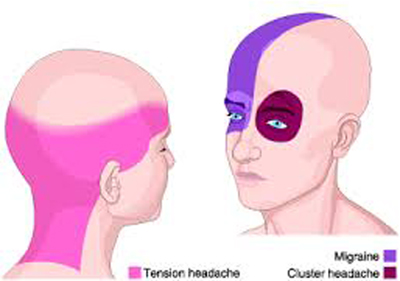Dose-response of Spinal Manipulation for Cervicogenic Headache: Study Protocol for a Randomized Controlled Trial
Chiropractic & Manual Therapies 2016 (Jun 8); 24: 23 ~ FULL TEXT
Linda Hanson, Mitchell Haas, Gert Bronfort, Darcy Vavrek, Craig Schulz, Brent Leininger, Roni Evans, Leslie Takaki and Moni Neradilek
Center for Outcome Studies,
The University of Western States,
2900 NE 132nd Ave,
Portland, OR 97230 USA.
BACKGROUND: Cervicogenic headache is a prevalent and costly pain condition commonly treated by chiropractors. There is evidence to support the effectiveness for spinal manipulation, but the dose of treatment required to achieve maximal relief remains unknown. The purpose of this paper is to describe the methodology for a randomized controlled trial evaluating the dose-response of spinal manipulation for chronic cervicogenic headache in an adult population.
METHODS/DESIGN: This is a mixed-methods, two-site, prospective, parallel groups, observer-blind, randomized controlled trial conducted at university-affiliated research clinics in the Portland, OR and Minneapolis, MN areas. The primary outcome is patient reported headache frequency. Other outcomes include self-reported headache intensity, disability, quality of life, improvement, neck pain intensity and frequency, satisfaction, medication use, outside care, cervical motion, pain pressure thresholds, health care utilization, health care costs, and lost productivity. Qualitative interviews are also conducted to evaluate patients’ expectations of treatment.
There are more articles like this @ our:
DISCUSSION: With growing concerns regarding the costs and side effects of commonly used conventional treatments, greater numbers of headache sufferers are seeking other approaches to care. This is the first full-scale randomized controlled trial assessing the dose-response of spinal manipulation therapy on outcomes for cervicogenic headache. The results of this study will provide important evidence for the management of cervicogenic headache in adults.
TRIAL REGISTRATION: ClinicalTrials.gov
(Identifier: NCT01530321).
KEYWORDS: Cervicogenic headache; Chiropractic; Mixed methods; Randomized controlled trial; Spinal manipulation
From the FULL TEXT Article:
Background
Headaches are a common, disabling condition with a substantial public health and financial impact on society. [1] Approximately half to three quarters of the global population experiences a headache during their life [2], and the financial costs on society are huge. It is estimated that 157 million days of work are lost each year due to headaches, costing approximately $50 billion in work absenteeism and medical benefits. [3] Neck pain is common among headache sufferers [4], and secondary headache pain referred from a neck disorder is defined as cervicogenic headache (CGH). [5] The point prevalence for CGH ranges from 0.4 to 4.6% [6–8] and up to 18% of the chronic headache population due to variation in its definition. [9]
Because of the growing concerns about harmful side effects from over utilized pain medication [10], there is a great need to investigate effective, safe, and cost-effective complementary and integrative health therapies for headache conditions. About 34% of US adults use such therapies annually [11], many for headache and neck pain. [12, 13] Spinal manipulative therapy (SMT), a commonly used treatment for headache [4], is among the most common. [14]
A growing body of literature supports the use of SMT for headache and no other intervention has been shown to be superior for the care of CGH. [15–18] Efficacy of SMT for the relief of chronic CGH has been summarized in systematic reviews [15, 19]; one review however found insufficient evidence to reach a conclusion. [20] Most randomized controlled trials found evidence of efficacy for SMT for CGH frequency, intensity and duration [4, 21–23], specifically compared to deep massage [24] and no treatment. [25] Despite this, there remains little consensus on what constitutes an appropriate dose of manipulation needed to achieve maximal benefit. [26–30] Preliminary studies suggest a dose–response relationship for SMT in the management of CGH. [27, 29] One pilot RCT (n = 24) examined differences between three doses: 3, 9, or 12 SMT visits and found preliminary benefits with larger doses. [27] A second (n = 80) compared 8 and 16 SMT visits and found clinically important differences between SMT and the control and small differences between the two doses for a number of headache outcomes. [29] This is the first full-scale randomized controlled trial to investigate this relationship.
Read the rest of this Full Text article now!




Leave A Comment